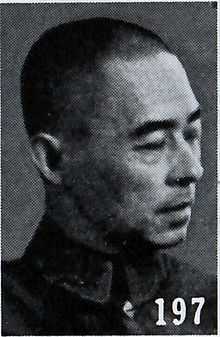Zhang Zhizhong
- Not to be confused with fellow general Zhang Zizhong.
| Zhang Zhizhong 張治中 | |
|---|---|
 | |
| General Zhang Zhizhong | |
| Governor of Xinjiang | |
| In office March 1946 – June I947 | |
| Preceded by | Tao Zhiyue |
| Succeeded by | Masud Sabri |
| Personal details | |
| Born | 27 October 1890 Chaohu, Anhui |
| Died | 6 April 1969 Beijing |
| Alma mater | Baoding Military Academy |
| Military service | |
| Allegiance | |
| Years of service | 1928–1939 |
| Rank | General 2nd Class |
| Commands | 5th Army 9th Army Group |
| Battles/wars | Battle of Shanghai (1932), (1937) Battle of Changsha (1939), Ili Rebellion |
| Zhang Zhizhong | |||||||
| Traditional Chinese | 張治中 | ||||||
|---|---|---|---|---|---|---|---|
| Simplified Chinese | 张治中 | ||||||
| |||||||
Zhang Zhizhong (27 October 1895 – April 1969) was a general in the National Revolutionary Army of the Republic of China. He was born in Chaohu, Anhui, and attended the Baoding Military Academy from which he graduated in 1916. He then served in the local warlord armies of Yunnan and Guangxi before heeding the call of Nationalist leader Sun Yat-sen and moving to Guangzhou to became an instructor at the Whampoa Academy. He participated in the Northern Expedition, and after the Nationalists established the new republican government in Nanjing, became the commandant of the Central Military Academy. He joined in Generalissimo Chiang Kai-shek's campaign against Yan Xishan and Feng Yuxiang, and led the 5th Army in the 1932 battle at Shanghai against Japan. Later as the head of the 9th Army Group (第九集團軍), Zhang supervised the defence of Shanghai against Japan in 1937. Zhang is generally regarded as one of Chiang's close confidants.
Later in the Second Sino-Japanese War, Zhang was later appointed Governor of Hunan and was responsible for the Great Fire of Changsha, a fire that got out of hand when he ordered key buildings razed in anticipation of a coming Japanese attack (which failed to materialize on time). He was relieved of his duty after this event and several individuals responsible for bad intelligence were executed. In 1940, he became the political director of the National Military Council.
He was Governor of Xinjiang from 1945–1948 during the Ili Rebellion.
In 1949 Zhang chose to remain on the mainland when Chiang and the remaining KMT forces fled to Taiwan. He joined the Communists afterwards.
Timeline of military career
- 1929–1937: Commandant of the Central Military Academy
- 1932: General Officer Commanding V Corps
- 1937: General Officer Commanding Nanking-Shanghai Garrison
- 1937: Commander in Chief 9th Army Group
- 1937: Commander in Chief Central Forces 3rd War Area
- 1940: Chief Aide-de-Camp to the Generalissimo
- 1940–1945: Minister of Political Training
- 1940–1945: Member of the National Military Council
- 1940–1945: Secretary-General of the Youth Corps San Min Chu I
- 1945–1949: Director of Nationalist North-western Headquarters
- 1946–1947: Chairman of the Government of Xinjiang Province
- 1954: Vice-Chairman of the National Defence Council, People's Republic of China